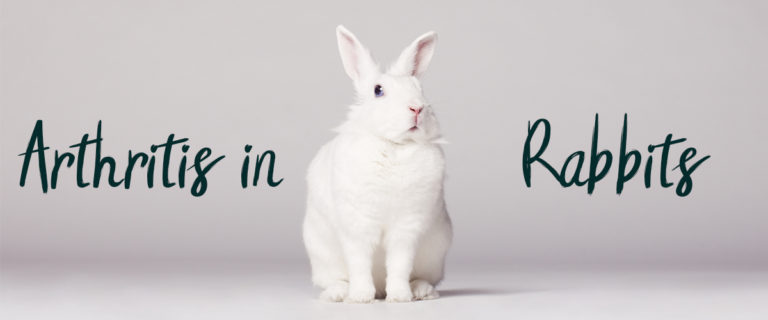Getting older has its perks. Wisdom. Unlimited half naps. Smaller indoor buns can see lifespans into their teens, and even larger household rabbits can push 10 years or more. But with age comes some pesky rites of passage. Most rabbits over six years of age have arthritis to some degree, but younger rabbits aren’t immune to sore, inflamed joints, either. Injuries and certain disabilities can cause early-onset arthritis too. Unfortunately, arthritis can’t be cured but it can be managed.
Symptoms of Arthritis in Rabbits
Arthritis is painful inflammation of the joints. Arthritis commonly comes about due to age, but can also result from obesity, previous injury to the leg or joint, genetics, or even bacterial infections. Symptoms will differ from rabbit to rabbit, but some common signs include the following:
- Limping or favoring one leg
- Wobbling/balance issues
- Stiffness or slower than usual movement
- Not eating caecotrophs directly from the rear
- Trouble getting up from a lying/sitting position
- Hesitation getting into or out of the litter box
- Withdrawn or out-of-character behavior (due to pain)
Treatment for Arthritis
A vet visit is the best first step when arthritis is suspected. Your exotic veterinarian may take X-rays, test your rabbit’s mobility, and evaluate his pain level. They might recommend long-term supplements, like glucosamine, and a bunny-safe prescription pain medication, like meloxicam. While arthritis can’t be reversed, you can take additional steps at home to slow its progression and control pain.
- Restrict movement and activity. Instead of allowing unlimited access to the entire home, a rabbit with arthritis may benefit from a smaller exercise area – at least at first. This will prevent additional damage to the joints until his symptoms are under control. Once your rabbit is responding to treatment, you can encourage gentle exercise, stretching, and even massage and physical therapy.
- Provide an easy-access litter box. For a rabbit with arthritis, tall walls can cause pain getting in and out. Cut out one of the walls or use a litter box with shorter sides to make things easier on your rabbit and prevent them from rejecting the litter box. Bonus points for using extra-soft bedding for your rabbit litter.
- Offer a heating pad. Giving your rabbit the option of resting on a heating pad is especially useful in cold weather (which can worsen symptoms for some rabbits with arthritis) but is a great way to increase circulation all year. Don’t force your rabbit to use a heating pad, as you certainly don’t want them to overheat. Many will quickly realize warmth’s joint-soothing power all on their own.
- Maintain a healthy weight. Overweight rabbits don’t move around as much as they should, which can decrease overall mobility. Extra weight puts unnecessary pressure on already inflamed joints and wears down cartilage. Light exercise (play!) and a healthy, balanced diet should keep your bun slim and trim.
Arthritis can be a pain, and many seasoned buns will face creaky joints at some point in their lives. But don’t fret; there are plenty of easy steps you can take at home and with your vet to keep your rabbit comfortable throughout his golden years.
Additional Reading:
http://www.disabledrabbits.com/arthritis.html
http://www.medirabbit.com/EN/Bone_diseases/Osteo/arthritis.htm





